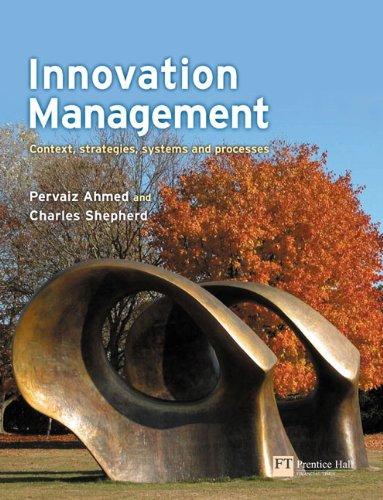When Molton Brown chief executive Sara Halton wanted to inject fresh life into the 34-year-old brand, she
Question:
When Molton Brown chief executive Sara Halton wanted to inject fresh life into the 34-year-old brand, she didn’t just talk to the people in new product development. She set up an advisory board 3 calling in Hip Hotel founder Herbert J.M. Ypma, interior decorator Andrew Martin and horticulturist Guy Barter, and six other experts. ‘I thought it would help us to think differently’, Halton says. ‘Ideas come out of the most surprising places sometimes.’
This is a new way of thinking about beauty product development. Traditionally, a company would see a gap in the market and talk to its laboratories or create a product in response to a competitor’s launch. But lately, the approach has been quite different. Nivea, for example, has just set up a discussion group with Stephen Bayley, creator of the Design Museum, in the chair. Its aim is to answer this question: ‘what is beauty?’ ‘Creating new products is not the reason for the group’, says Ann-Louise Holland, PR manager for Nivea’s parent company, Biersdorf UK. However, ‘if light bulbs for new products come out of it, we’ll pick up on them.’
Five years previously, Chris Sanderson at the Future Laboratory, a trend-forecasting strategic consultancy, received a call from Procter & Gamble. ‘We were commissioned by them to look into the concept of light, without knowing why’, Sanderson says. The outcome was The Book of Light, a report that offered insights into how the cosmetics market was set to change over the coming decade. And the result in product terms is rumoured to be the bestselling Olay Regenerist range. Then there’s the Mind Gym, a corporate consultancy famed for coming up with the concept of the stuffed crust pizza during one of their workshops, who were approached by GlaxoSmithKline to run a ‘Generating Creative Sparks’ workshop with its oral hygiene team.
‘It’s a cornucopia of stimuli to the senses’, explains Octavius Black, global managing director of the Mind Gym and co-author of The Mind Gym: Wake Your Mind Up. One exercise, for example, involves objects such as teddy bears or rubber being proffered with the objective to create ideas in a specific field. According to Sarah Leonard, vice president of leadership and organisation for GlaxoSmithKline, ‘in just 90 minutes, the business generated over 60 innovative concepts for new product development, of which 30 were then taken and further progressed.’ One new, top-secret toothpaste is being launched on the back of the workshop.
It’s not just idea generation that is being revolutionised, though; these days the big beauty giants are creating products using more esoteric sources. For example, the technology used to develop protective clothing in Japan has been modified for use in skincare. It takes the form of an ingredient called Diakalyte in an anti-ageing product by L’Oréal’s Biotherm, called Source Thérapie Superactiv serum.
‘L’Oréal has a worldwide open innovation process that looks for any new technologies and concepts mastered in other industries that could be of interest to the cosmetics industry’, says Patricia Pineau, L’Oréal’s director of scientific communications. ‘We took the technology from the waterproof fabric and translated it to work for a skin cream. We wanted to preserve skin transparency as well as increase the diffusion of light. In other words, create the optical effect of a skin surface that is at once smooth, transparent and matt.
QUESTIONS
1. To what extent does this case study justify being innovative in an organisation’s approach to innovation?
2. Analyse and categorise the different approaches that are described.
3. Consider another industry very different from skincare and suggest ways in which they could benefit from looking at that industry from outside the box.
Step by Step Answer:

Innovation Management Context Strategies And Processes
ISBN: 9780273683766
1st Edition
Authors: Charlie Shepherd, Pervaiz K. Ahmed





